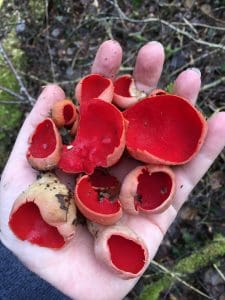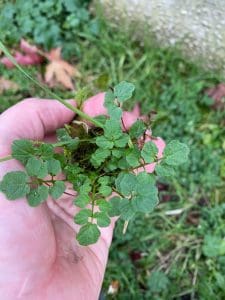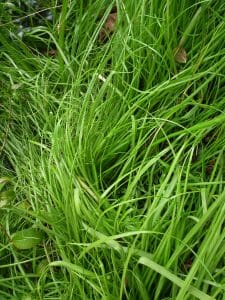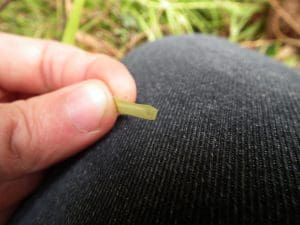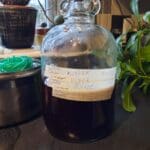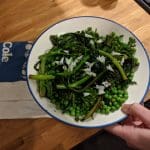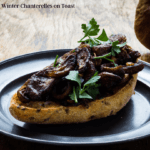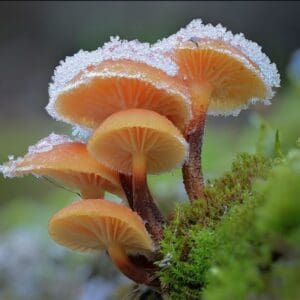Christmas is over, you’ve already broken your new year’s resolution and the weather’s foul but believe it or not there’s still plenty to be foraging in January. Make the most of those brief breaks in the rain and burn off some of that Christmas dinner.
So what can you forage in January? Here are our top five picks for the month.
Oyster Mushrooms
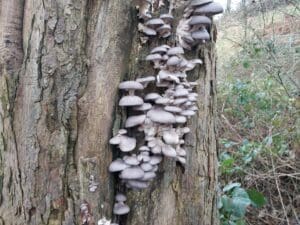
A mushroom that’s common and can be found all year around. It is dead easy to ID and usually grows in large, overlapping clusters. You’ll find them growing on dead or decaying broad leaved trees and stumps and they are a great meat substitute.
Click here for the ID guide for Oyster mushrooms.
Three-cornered leek
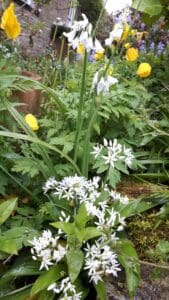
One of the first plants to emerge and to look out for, it’s a non-native invasive species that can be used as a substitute for spring onions. The leaves have 3 sides hence the common name and it is normally found in damp environments at the sides of ponds and rivers.
Click here for the ID guide for Three-cornered leeks
Dandelion root
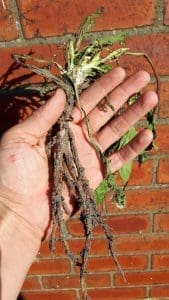
Winter is the best time to harvest the roots of Dandelion, the plant uses the root to store carbohydrates over winter. As long as the ground isn’t frozen solid they are pretty easy to remove but remember to seek the landowners permission beforehand.
Click here for the ID guide for Dandelion
Spruce needles
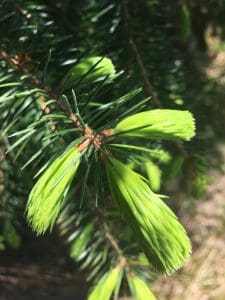
Yes you can eat your Christmas tree but the flavour comes from volatile oils that have most likely evaporated by now so go out into the wild and harvest some fresh ones. Conifers are an underused resource that are available all year round and safe once you can identify a Yew tree.
Click here for the ID guide for Spruce.
Bittercress
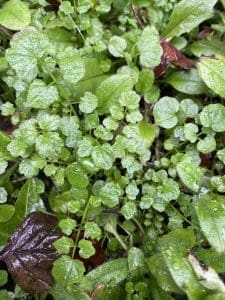
A tiny plant that packs a punch, you’ll find them everywhere including your back garden. Use it as you would rocket or watercress for a spicy, mustardy kick.
Click here for the ID guide for Bittercress.
Recipe of the month for January
Dandelion Root Roasted Coffee

Great for detoxifying your body after Christmas excesses, it’s simple, caffeine free, and tastes great. Once the roots are baked and powdered you could also use them to make our Dandelion root cheesecake or panna cotta.
Ingredients:
- Dandelion Roots
Method:
- Dig your dandelion roots, the easiest way to do so is to loosen the soil around the dandelion with a pitchfork before then digging out the root – if you don’t there’s a good chance the root will snap.
- Wash the roots, removing any dirt and mud
- Chop roughly into about 1 cm cubes
- Place on a baking tray and put in a pre-heated oven to 180 C for 45 minutes
- The key to doing this right is to leave the oven door open for the first 15 minutes
- Grind in a pestle and mortar or coffee grinder and store in an airtight jar
To make the coffee
Ingredients:
- Ground and Roasted dandelion Roots – 1 tsp per person
- Boiling Water – 250 ml per person
- Full Fat milk – to serve
- Birch sap syrup – to taste (or honey)
Method:
- In a coffee plunger place your roasted dandelion roots
- Top up with boiling water and leave to infuse for 8 minutes
- Serve with full fat milk and birch sap syrup to taste.

Click here for more Winter recipes.
What to forage in December.
We’re all getting ready for the Christmas festivities but there’s still some space to get out foraging in December. This month also features the Winter Solstice which celebrates the shortest day and the longest night of the year. There may be less to forage but there are a few species that prefer these colder temperatures.
What to forage in February.
When we’re Foraging in February the weather tends to still be cold and there’s still the risk of snow and frost but on the odd days when the sun does shine it gives me hope that spring is just around the corner.
